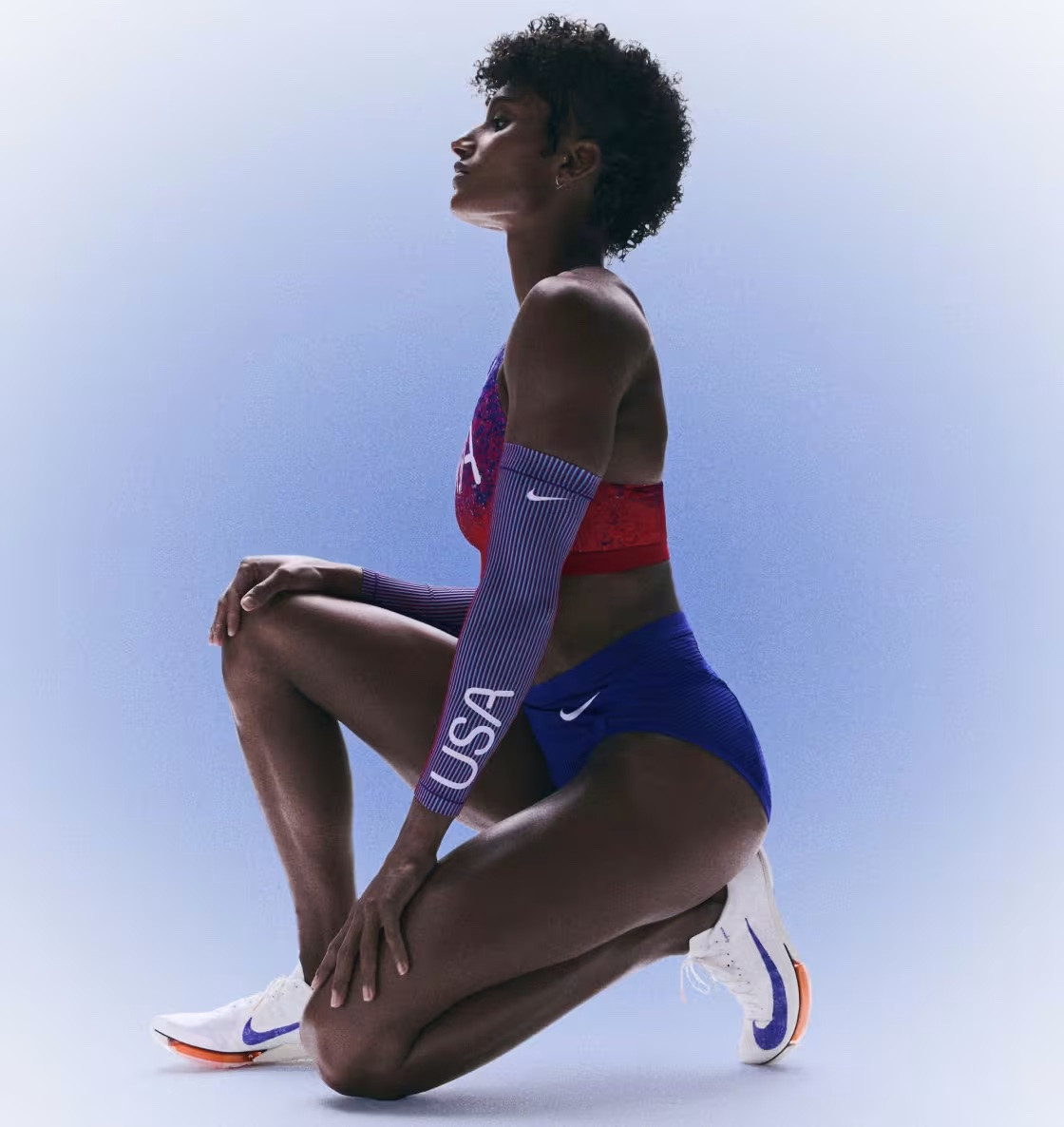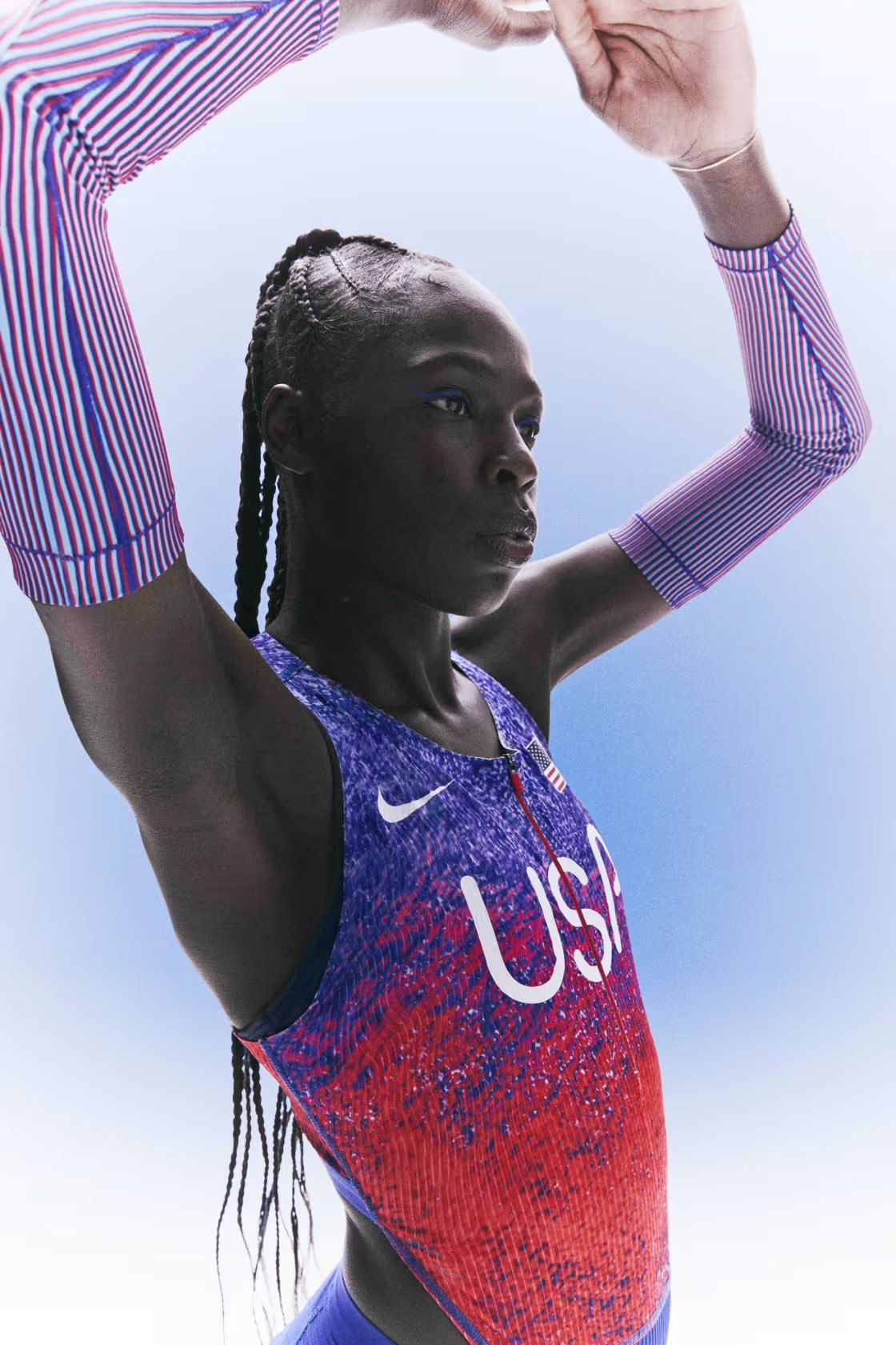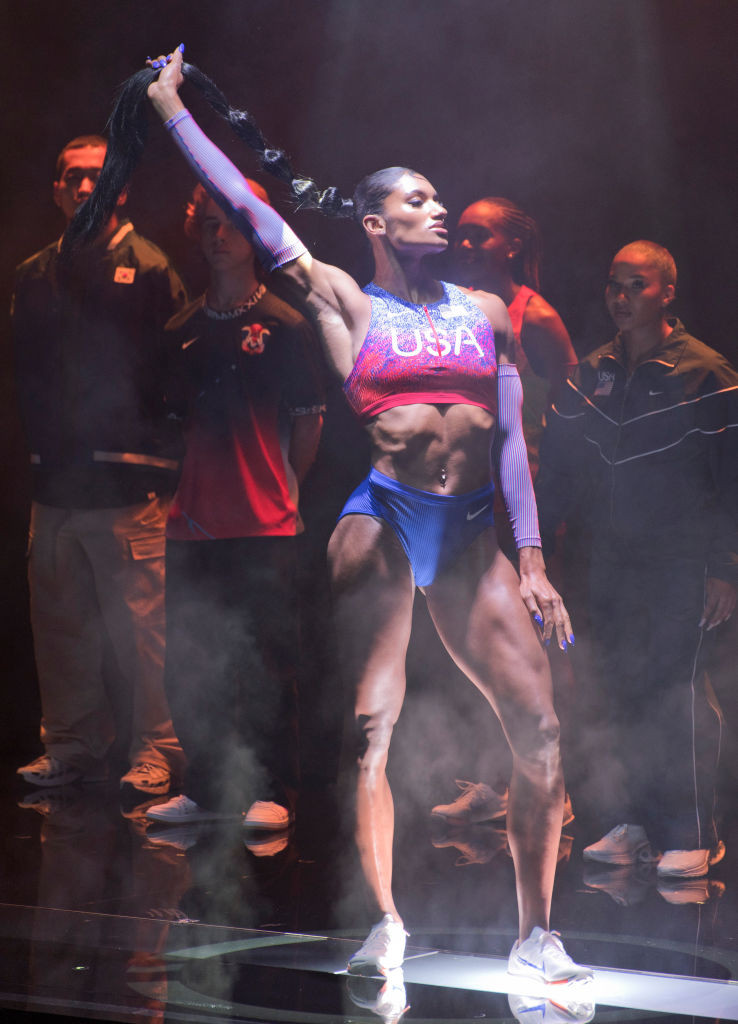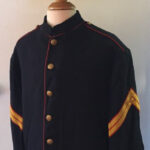Nike’s unveiling of the track and field uniforms for Team USA at the 2024 Paris Olympics has sparked a significant debate, particularly concerning the design of the women’s kit. Critics have taken to social media to voice concerns about potential sexism in the performance wear, ignited by the brand’s debut of the uniforms on Thursday. The controversy centers around the women’s options, specifically a French-cut leotard design, leading to discussions about athlete comfort, performance, and the representation of women in sports.
Athlete Reactions and Design Details
The uproar began when Citius Mag, a track and field publication, shared images of both the men’s and women’s uniforms. The women’s design, featuring a high-cut leotard silhouette, immediately drew attention and criticism. While the 2024 kits maintain the traditional red, white, and blue color scheme reminiscent of the Tokyo Olympics in 2021, the cut of the women’s uniform became the focal point of the debate.
 Image of Team USA athlete Anna Cockrell modeling Nike's Paris 2024 track and field kit at the Nike Air Innovation Summit in Paris.
Image of Team USA athlete Anna Cockrell modeling Nike's Paris 2024 track and field kit at the Nike Air Innovation Summit in Paris.
American long jumper Tara Davis-Woodhall, a Tokyo Games competitor, humorously commented on Instagram about the revealing nature of the uniform, stating, “Wait my hoo haa is gonna be out.” Queen Harrison Claye, a U.S. hurdler and Olympian, sarcastically inquired if European Wax Center would consider sponsoring Team USA, highlighting the perceived impracticality of the design. These initial reactions from athletes themselves quickly amplified the criticism surrounding the women’s Olympic uniforms.
Concerns Over Practicality and Performance
Beyond the initial shock, athletes and commentators raised serious questions about the functionality of the women’s uniform for high-level athletic performance. Paralympic runner Jaleen Roberts pointed out the revealing nature of the uniform even on a stationary mannequin, questioning how it would perform “MID FLIGHT” during competition. Steeplechaser Colleen Quigley, an Olympic hopeful, echoed these concerns in an interview with Reuters, stating that the unitard “is absolutely not made for performance.”
 Image of Team USA athlete Athing Mu modeling Nike's Paris 2024 track and field kit, showcasing the design under scrutiny.
Image of Team USA athlete Athing Mu modeling Nike's Paris 2024 track and field kit, showcasing the design under scrutiny.
Lauren Fleshman, a respected coach and retired track star with multiple national championships, delivered a powerful critique on Instagram. She described the revealing uniform as “a costume born of patriarchal forces” that are outdated and detrimental to women’s sports. Fleshman emphasized the need to stop imposing unnecessary obstacles on female athletes, arguing that the focus should be on performance and respect, not on outdated notions of attracting viewers through revealing outfits.
Defense of Nike and Athlete Choice
Amidst the criticism, some athletes, like Olympic pole vault gold medalist Katie Moon, stepped forward to defend Nike and provide crucial context. Moon clarified that the mannequin display was misleading and “concerning,” but emphasized that Team USA athletes have a wide array of uniform options – at least 20 different combinations. Crucially, she noted that female athletes have access to “the men’s option” if they prefer.
Moon argued that criticizing the “buns and crop top” options as inherently sexist undermines the agency of female athletes who choose to wear them. She framed it as a matter of athlete autonomy and the right to select uniforms that feel comfortable and empowering for individual athletes. This perspective brought a nuanced dimension to the debate, highlighting the importance of choice and avoiding generalizations about women’s preferences in athletic wear.
Nike and USATF Respond to the Controversy
In response to the growing backlash, Nike issued a statement to ABC News, clarifying that the controversial unitard is “one of a range of styles” available to athletes. The brand also assured that “tailoring options” would be provided at the Olympic Games, indicating a degree of flexibility and accommodation for individual athlete needs.
USA Track & Field (USATF) also addressed the controversy in a statement to ABC News. They emphasized that the debated outfits are “only two of many options, including 50 unique pieces,” athletes can choose from for the Paris Olympics. USATF further stated that “Athlete options and choices were the driving force” in their planning process with Nike and that Nike consulted with athletes during the design phase to ensure comfort and suitability for various events.
 Image of Anna Cockrell at the Nike Air Innovation Summit in Paris on April 11, showcasing various sportswear options and the Olympic context.
Image of Anna Cockrell at the Nike Air Innovation Summit in Paris on April 11, showcasing various sportswear options and the Olympic context.
Navigating the Conversation Around Women’s Sports Uniforms
The Nike women’s Olympic uniform controversy highlights the ongoing complexities surrounding gender representation and performance wear in sports. While some perceive revealing uniforms as sexist and impractical, others emphasize athlete choice and the diversity of preferences among female athletes. The discussion underscores the need for a balanced approach that respects athlete autonomy, prioritizes performance and comfort, and moves away from outdated, potentially patriarchal, expectations about women’s sports attire. As the Paris 2024 Olympics approach, the conversation around women’s Olympic uniforms serves as a crucial reminder of the importance of athlete-centered design and respectful representation in the world of sports.

